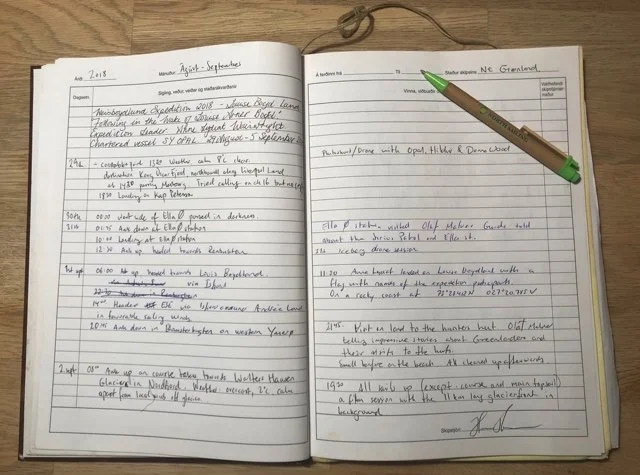New Edition
In The Wake Of Louise Arner Boyd
For the last ten years artist Anne Lydiat has voyaged in the wake of the American Arctic explorer Louise Arner Boyd (1887-1972). Boyd wrote:
“Far north, hidden behind grim barriers of pack ice, are lands that hold one spellbound. Gigantic imaginary gates, with hinges set in the horizon, seem to guard these lands. Slowly the gates swing open, and one enters another world where men are insignificant amid the awesome immensity of lonely mountains, fiords, and glaciers. Five times have the gates opened for me. May they do so many times again!”
Lydiat’s original inspiration was anchored in her experience of living aboard MB ROCK, a small ship moored on the tidal River Thames downstream from Tower Bridge 51.5055° N 0.0754° W. Lydiat wrote:
“The fluvial existence was central to my artistic practice and the methods employed take the form of time-based elements: soundings, drawings, photographs, moving image and writings.”
Alongside her voyages Lydiat explored the cultural and historical narratives of women who sailed (herstories) and the range of influences and conditions that affected women’s literary practices based on the concept of the gendered ship. She explored the confluence of both the personal and the political in travel writing at sea, and the dialectic between mobility and stasis, in particular across the geographical and historical boundaries of the Arctic.
In August/September 2018 Lydiat commissioned the Icelandic sailing vessel OPAL for an expedition to Louise Boyd Land, 73° 31’ N 28° W. Of specific interest to the 2018 expedition was Boyd’s primarily photographic expedition in 1931 when she and her crew discovered a glacier and land, located between the Gerard De Geer Glacier and the Jaette Glacier, and subsequently named the Louise Glacier and Louise Boyd Land respectively.
During Boyd’s 1931 expedition, she and her crew discovered land between the Jaette and De Geer Glaciers, a discovery that contradicted the best available maps at the time. The land was subsequently named Louise Boyd Land or Weisboydlund in Danish in honour of her discovery.
Boyd wrote two technical and scientifically accurate accounts of her self-financed Arctic expeditions including descriptions of the geology, flora and fauna. She made hydrographic surveys taking soundings in the Greenland Sea. Each publication contains numerous black and white photographs documenting the uninhabited regions of Greenland.
Logbook for Expedition to Louise Boyd Land. Photo: © Anne Lydiat 2018
Lydiat’s 2018 expedition sailed in those Greenland Arctic waters using Boyd’s original maps and charts of the region. Through a multi-disciplinary approach, including rephotography, drawings, audio and visual recordings, (including hydrophone recordings) marine micro and macro surveys by collecting water samples and mapping the extent of plastic pollution in this pristine part of the world.
This contemporary expedition gives insight into the original work of Louise Arner Boyd and importantly brings new creative, cultural and scientific vision to this virtually unexplored region of the Arctic to share and communicate some of the ever-changing aspects of the Arctic regions explored by Boyd over 80 years ago.
